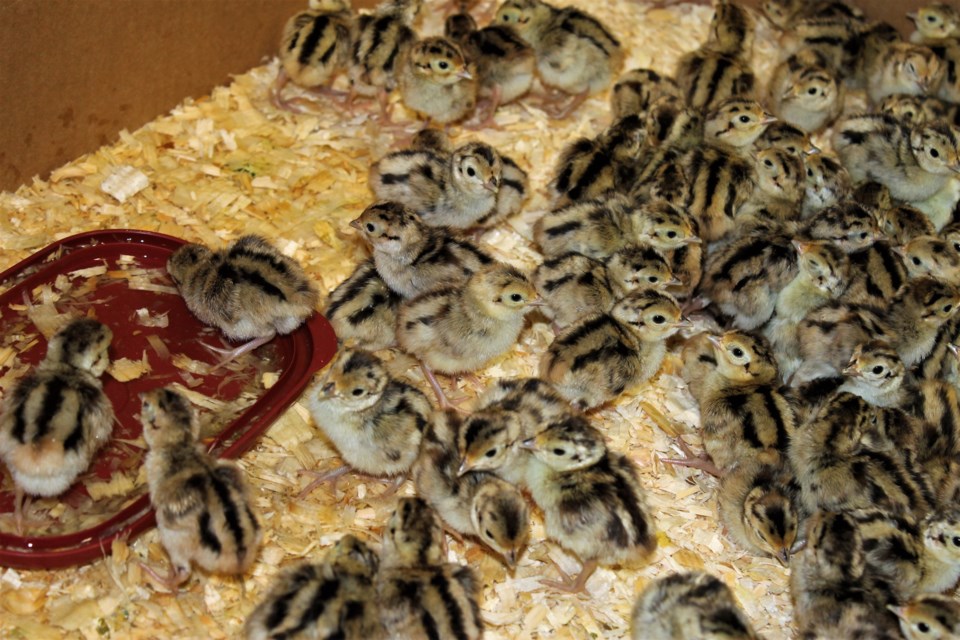The Moose Jaw Wildlife Federation has brought the miracle of life to a number of Moose Jaw schools this spring: they’re hatching ring-necked pheasant eggs as part of their annual Pheasants in the Classroom program.
Ten schools are taking part this year, ranging from daycares up to high schools, and they were each given 30 eggs to incubate.
The fluffy chicks are hatching at a healthy rate, according to MJWF president Todd Smith, and should hopefully be finished by the end of the week.
The eggs come from a partnership with the Wildlife Federation in Swift Current, and Smith estimated the fertility rate to be around 90 per cent for this year’s batch — hopefully, good news for how many eggs will successfully hatch.
“[The hatch ratio] really depends on the year and our eggs are only as good as the pheasants that laid them,” said Smith. “Depending on the fertility rate of the eggs and the care that's given to them in the incubators, we will average about a 70 to 75 per cent hatch rate.”
With 300 eggs in play, that’s a lot of newborn pheasants.
After hatching, the day-old chicks are collected from across the city to one brood box, where they then travel out to one of two farms outside the city raising them into full-grown birds.
Once they’re big enough, the pheasants are released in the late summer or fall. They will be released in the Moose Jaw area — around Hamilton Flats, Fourth Avenue SW, and on Sask Wildlife habitat lands.
The pheasant hatching program has been running for around 20 years, said Smith. It is an important learning experience for the students — not only do they learn about the birds, but they also get hands-on experience with wildlife conservation.
“There's a lot of theory that we teach in schools and we teach how they can get involved, but then to actually let them participate in a project where they give back to the resource is a pretty huge deal for a lot of them,” said Smith.
Although the chicks are extremely cute, Smith finds that students are more excited than sad to see them go; they learn about the natural life-cycle of pheasants and want to see them thrive in the wild.
Because pheasants aren’t native to Canada, their population struggles to survive the winters, making this program important for their continued success.
Smith usually has a lot of interest from schools each year, and starts taking volunteers around Christmas. Classrooms interested for next year can contact the MJWF through their website’s contact form to get on the list.
Our incubators were full at school this morning. We have hatched out 186 #pheasant chicks, and there are more in the way. @SaskWildlife #pheasantsinclassrooms #MJWildlifeFederation pic.twitter.com/NzlV8wHzNM
— Todd Smith (@Upland_Hunter) May 13, 2019




